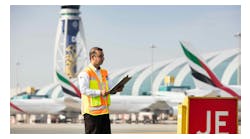Massport Moves Forward with Plans to Consolidate American Airlines Gates
The Massachusetts Port Authority (Massport) voted Sept. 15, to approve a partial project budget of $45 million dollars for improvements to Terminal B of Logan International Airport.
The project, necessary as a result of the merger of American and US Airways, will consolidate all American Airlines gates from two different locations in Terminal B to 18 contiguous gates on the side of the terminal formerly occupied by US Airways. The current three security checkpoints on the former US Airways side of Terminal B will be consolidated into one modern checkpoint. American currently serves approximately 6 million passengers per year at Logan.
“Massport continues to strategically invest in projects that will enhance passenger experience and airline operations,” said Massport CEO Thomas P. Glynn. “The Terminal B project will streamline passenger movement, improve coordination within one of our largest airline partners and support more efficient operations at Logan International Airport.”
Additionally, the project will include the expansion and reorganization of ticketing counters and kiosks; gate modifications to better accommodate airline requirements; an improved baggage handling area; reconfigured concession locations and organization and passenger experience enhancements including improved aesthetics, specialty seating and wayfinding.
In total, the project will include the construction of an additional 75,000 sq. ft. and the renovation of approximately 70,000 sq. ft. of existing space within Terminal B. The project will pursue green building initiatives and LEED Certification, the level of which will be determined as project planning advances.
Once the project is completed, it is expected that Southwest Airlines will move from Terminal A into American’s vacated gates at Terminal B.
Following the approval of the subsequent phases of the project, construction is expected to commence in March of 2017 and be completed by the end of 2018; during which the equivalent of approximately 1669 full-time direct and related jobs are expected to be generated.



